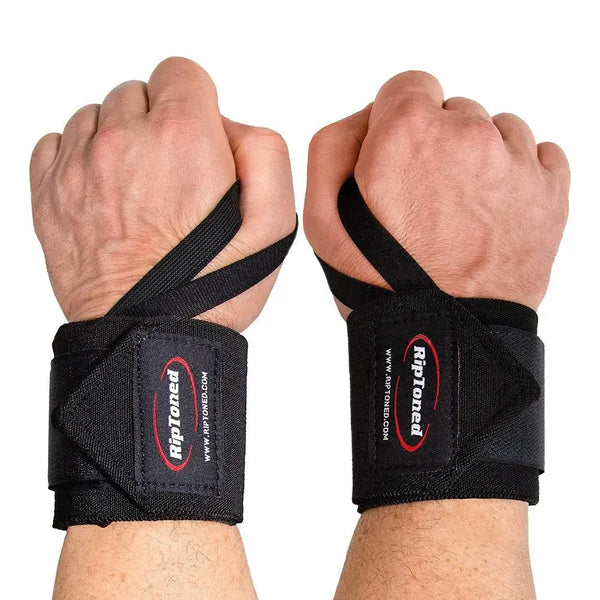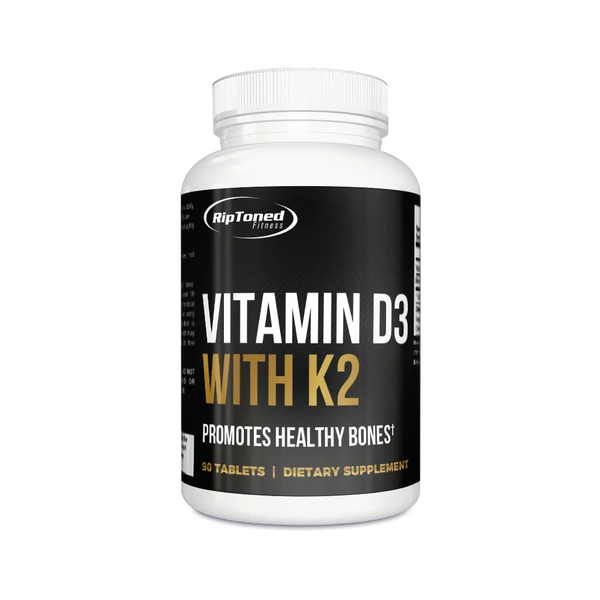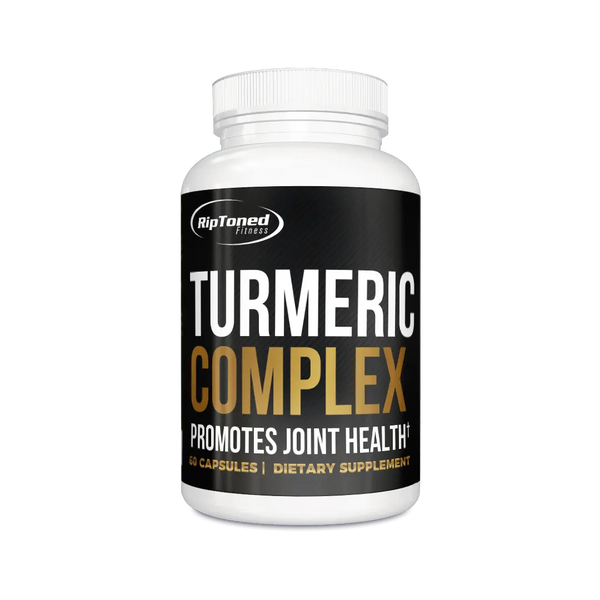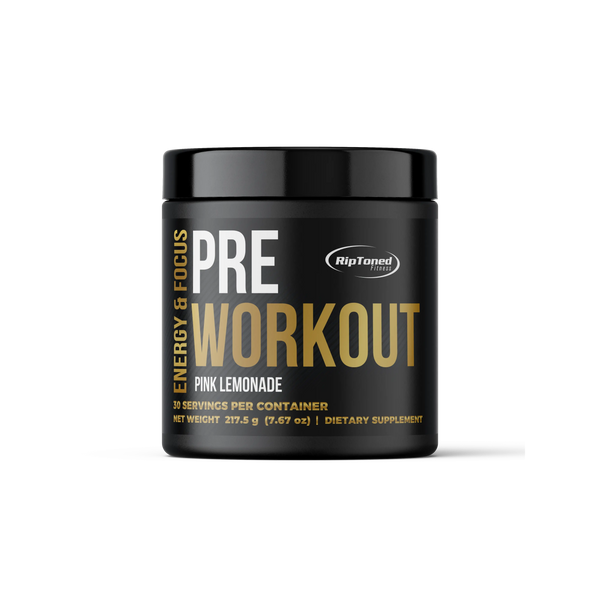
Can Weightlifting Cause Hemorrhoids
Mark PasayShare
Weightlifting, while beneficial for building strength and endurance, involves significant physical strain that can lead to increased abdominal pressure.
This pressure, especially when improper techniques are used, can cause or exacerbate hemorrhoids—a condition where the veins around the rectum and anus become swollen and painful.
Hemorrhoids can result from excessive straining during heavy lifts, making it crucial for weightlifters to use proper form and breathing techniques. Additionally, preventive measures such as adequate hydration, a high-fiber diet, and avoiding excessive weight can help mitigate the risk.
By understanding these factors, weightlifters can continue to train effectively while minimizing the risk of developing hemorrhoids.
Understanding Hemorrhoids
Hemorrhoids are swollen and inflamed veins around the rectum and anus that can cause discomfort, pain, and bleeding. They can be internal or external, with internal hemorrhoids being located inside the rectum while external ones protrude outside the anal opening.
They are a common condition affecting millions worldwide, with factors such as genetics, pregnancy, constipation, and excessive straining during bowel movements contributing to their development.
Weightlifting can also increase abdominal pressure and strain on these veins, leading to hemorrhoids or worsening existing ones. Proper form while lifting weights is crucial in preventing this strain, and ensuring proper breathing techniques can also help reduce the risk. To relieve hemorrhoid symptoms, individuals can use over-the-counter creams and ointments or practice simple self-care measures such as taking warm baths and using ice packs.
Types of Hemorrhoids
There are three types of hemorrhoids: internal, external and prolapsed.
Internal Hemorrhoids
Internal hemorrhoids develop inside the rectum and are not usually visible or painful unless they prolapse or protrude outside the anus. Symptoms may include bleeding during bowel movements, itching, and discomfort.
External Hemorrhoids
External hemorrhoids can be seen and felt around the anal opening and can cause pain, swelling, and irritation. They can result from increased pressure on the veins in that area, making weightlifting a potential risk factor for their development.
Prolapsed Hemorrhoids
Prolapsed hemorrhoids refer to internal hemorrhoids that have prolapsed or protruded outside the anus. They can be caused by straining during bowel movements, pregnancy, and heavy lifting. Symptoms may include bleeding, pain, and discomfort.
To determine the type of hemorrhoid an individual has, it is essential to consult a medical professional for proper diagnosis and treatment.
Can Weightlifting Cause Hemorrhoids
Weightlifting, in itself, isn't a direct cause of hemorrhoids. However, employing improper techniques while lifting can contribute to the development or worsening of hemorrhoids. The following mistakes in weightlifting form may elevate the risk of experiencing hemorrhoids.
Lifting Weights that are Too Heavy:
Lifting weights that are too heavy can cause excessive straining and pressure on the veins around the anus, leading to hemorrhoids. Remember, it is more difficult than we think to lift weights that are not meant for our strength level or technique.
Holding Your Breath:
Holding your breath while lifting weights increases intra-abdominal pressure, which can put a strain on the veins in the rectal area. And internal organs like the heart, brain, and lungs need oxygen to function efficiently.
Improper Breathing Techniques:
Similar to holding your breath, not using proper breathing techniques during weightlifting can lead to increased abdominal pressure and contribute to the development of hemorrhoids. To lift heavy weights successfully, individuals should exhale as they lift and inhale as they lower the weight.
Performing Isolated Exercises:
Isolated exercises such as bicep curls, tricep extensions, and leg presses can increase intra-abdominal pressure and strain on the rectal veins. Incorporating compound exercises that engage multiple muscle groups and require proper breathing techniques can help reduce the risk of developing hemorrhoids.
Poor Form:
Poor form while performing weightlifting exercises can also increase pressure on the abdomen and aggravate existing hemorrhoids. It is essential to learn and use the correct form when lifting weights to avoid this risk.
Related Products
Too much weight can damage the spine or cause back pain. It's best to start with lighter weights and gradually increase as strength improves.
Mechanisms by Which Weightlifting May Cause Hemorrhoids
Weightlifting can cause hemorrhoids through the following mechanisms:
Increased Intra-Abdominal Pressure:
Weightlifting involves significant physical strain and pressure on the abdominal area, leading to increased intra-abdominal pressure. This pressure can then put stress on the veins in that area, causing them to swell and become inflamed.
Straining and Holding Breath:
Improper techniques while lifting weights may cause straining and holding one's breath, which increases intra-abdominal pressure. This strain on the abdominal muscles can also contribute to developing or worsening hemorrhoids.
What are the Symptoms and Treatment Options for Hemorrhoids
Symptoms of hemorrhoids may include bleeding during bowel movements, itching, pain, and discomfort in the anal area. In some cases, individuals may also notice a lump or swelling around the anus. These symptoms can vary depending on the type and severity of hemorrhoids.
Treatment options for hemorrhoids range from self-care measures to medical procedures. Self-care measures include practicing proper hygiene, using over-the-counter creams and ointments, taking warm baths, and using ice packs to alleviate discomfort. Medical treatments include minimally invasive techniques such as rubber band ligation, sclerotherapy, and coagulation therapy to reduce the size of hemorrhoids or surgical removal in severe cases.
It is essential to consult a medical professional for proper diagnosis and treatment, especially if symptoms persist or worsen. In some cases, hemorrhoids can also be an indication of other underlying health conditions, such as colorectal cancer, so it is crucial to seek medical attention to rule out any serious issues. Avoid lifting heavy objects or straining during bowel movements to prevent hemorrhoids from worsening or recurring.
Weightlifting Modifications and Precautions for Those with Hemorrhoids
Individuals who have hemorrhoids or are at risk of developing them can still engage in weightlifting by following some precautions and modifications. These may include:
- Avoiding heavy weight lifting: As mentioned earlier, excessive straining and pressure on the abdominal area can contribute to hemorrhoids. Therefore, individuals should avoid lifting weights that are too heavy for their abilities.
- Using proper form and breathing techniques: Proper form while lifting weights reduces strain on the abdomen and can help prevent hemorrhoid development. Additionally, practicing proper breathing techniques during weightlifting also decreases intra-abdominal pressure.
- Taking breaks and modifying exercises: It is essential to listen to your body and take breaks when needed. Modify exercises to avoid putting excessive strain on the abdominal area, such as swapping out squats for lunges or using lighter weights.
- Consult a medical professional: Before beginning any weightlifting routine, individuals with hemorrhoids should consult a medical professional for personalized recommendations and precautions.
By taking these precautions and modifications, individuals can continue to enjoy the benefits of weightlifting while minimizing their risk of developing or worsening hemorrhoids.
FAQs
Can lifting heavy weights cause hemorrhoids?
Yes, lifting heavy weights can increase pressure on the veins around the anus and lead to hemorrhoids. It is essential to lift weights suitable for your strength level and use proper form and breathing techniques.
How can I prevent hemorrhoids while lifting weights?
To prevent hemorrhoids while lifting weights, ensure you lift weights correctly by using proper form and technique. Avoid excessive straining and holding your breath during lifts, as these actions can increase abdominal pressure. A bowel movement before working out can also help prevent hemorrhoids.
Can improper weightlifting techniques affect bowel movements and cause hemorrhoids?
Yes, improper weightlifting techniques that involve excessive straining and pressure on the abdomen can lead to hemorrhoids. It is essential to use proper form and breathing techniques while lifting weights to avoid this risk. Additionally, avoid heavy lifting if you have existing hemorrhoids or are at risk of developing them.
Conclusion
In conclusion, while weightlifting itself is not a direct cause of hemorrhoids, improper techniques can significantly increase the risk of developing or worsening this condition.
Key factors include increased abdominal pressure and excessive straining during heavy lifts. Proper form and technique are essential to minimize these risks, along with preventive measures such as maintaining a high-fiber diet, staying hydrated, and avoiding breath-holding during lifts.
By understanding the potential dangers and adopting correct weightlifting practices, individuals can continue to reap the benefits of weight training without compromising their rectal health. Prioritizing proper methods and overall wellness is crucial for a safe and effective weightlifting routine.

Related Posts
-
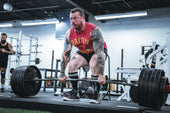
POWERLIFTING THE RIGHT WAY
-
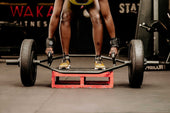
Unlock Your Strength Potential: Conquer Weak Grip Strength Now
-
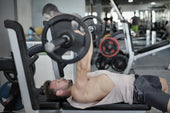
Bench Press to Success - Mastering your form
-
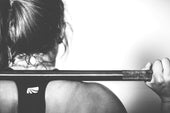
5 Tips for Women to Build Lean Muscle Tone in 2024
-

How to Get the Most Out of a Lifting Session
-
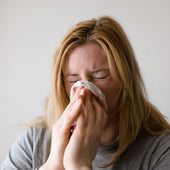
Working Out Under the Weather
-

The Lesser-known Benefits of Weightlifting
-

How Weight Training Supports Immune Health
-

The History of Weightlifting
-

Rest up to build up
-

4 Tips to Improve Lifting Gains The Right Way
-

4 Tips to Prevent Training Injuries
-
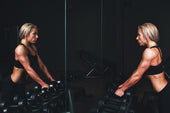
Top 3 Work Out Myths EXPOSED!!
-

Common Lifting Injuries (And How to Avoid Them)
-

Hit the Gym or Stay at Home?
-
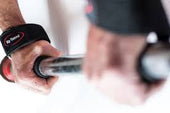
Weightlifting Benefits – Many Health Benefits for Men and Women
-

How Many Times a Week Should I Deadlift? A Guide to Deadlift Frequency and Programming
-

Can Deadlifts Hurt Your Back? Understanding Risks and Prevention
-

Why Does Whey Protein Make Me Sick
-

Can Protein Powder Upset Your Stomach
-

What To Mix Unflavored Protein Powder With
-

Crush Your PRs: The Gradual Strength Increase Guide for CrossFitters
-

Whey vs Collagen Protein: Which Is Best for You?
-

Can I Take Whey Protein Without Working Out? What You Need to Know
-
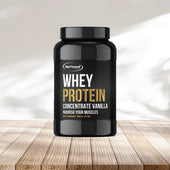
Why Does Whey Protein Hurt My Stomach: Causes and Solutions
-

Boost Your Run: Should You Take Pre-Workout Before Running?
-

Top Pre-Workout Benefits: Boost Energy and Enhance Performance
-

How Long Does Pre-Workout Take to Kick In? Find Out Here!
-
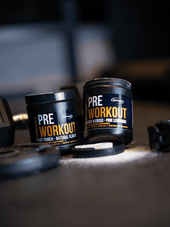
How Long Does Pre-Workout Last? Your Essential Guide
-

Does Pre-Workout Give You Pimples
-

How Long Does Pre-Workout Stay in Your System
-

When Should I Take Pre-Workout
-

Can I Mix Creatine With Pre-Workout
-

Long Term Side Effects of Pre-Workout Supplements
-

How Much Caffeine in Pre-Workout
-

Pre-Workout Alternatives
-

Does Pre-Workout Break a Fast
-

What to Eat Pre-Workout
-

What is In Pre-Workout
-

Advantages of Pre Workout Supplements
-

How To Get Rid Of Pre Workout Itch
-

How To Make Your Own Pre Workout
-

How Many Scoops Of Pre Workout Should I Take
-

How Bad Are Pre Workouts For You
-

How Long Before A Workout Should I Take Pre-Workout
-

How Much Caffeine Is In Bucked Up Pre Workout
-

How Long Does Pre Workout Increase Blood Pressure
-

What Does Pre Workout Do
-

Can I Use Sprite As Pre Workout
-

Can Supplements Boost Weightlifting Motivation
-

Why Do Weightlifters Wear Belts
-

Does Lifting Weights Cause Varicose Veins? What You Need to Know
-

Does Lifting Weights Affect Uterus Health? What Women Need to Know
-

How Lifting Weights Can Affect Your Sex Drive: Does Lifting Weights Make You Horny?
-

Why Don't I Sweat When I Lift Weights? Understanding the Causes
-

Why Are Physical Fitness Attitudes Important? Insights & Benefits
-

Why is Anytime Fitness So Expensive? Understanding Membership Costs
-

Substitute For Whey Protein Powder In Keto Baking
-

How Many Calories Does 1 Hour of Weightlifting Burn
-

A Guide To Cleaner Protein Supplementation
-

What Causes The Frothiness in Your Fitness Drink
-

How to Take Collagen Safely After a Gastric Bypass: Essential Tips
-

Why Do Protein Shakes Make Me Nauseous? Top Reasons and Solutions
-

Why Does My Stomach Hurt After Protein Shake? Understanding Your Digestive Discomfort
-

Can I Take Collagen After Gastric Bypass
-

Why Does My Protein Shake Foam
-

Best Belt for CrossFit: Complete Guide 2025
-
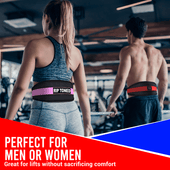
Rip Toned vs SBD Belts: Which Brand Offers Better Value and Performance?
-

The Complete Guide to Women's Weightlifting Belts
-

Should Beginners Use a Weightlifting Belt
-

10mm vs 13mm Belt Thickness: The Complete Guide
-
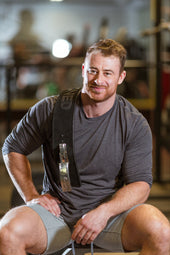
Prong Buckle vs Lever Buckle Belts: The Ultimate Comparison Guide
-
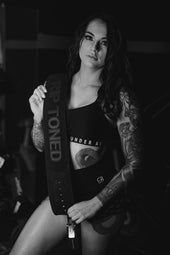
Powerlifting Belts vs Bodybuilding Belts
-

Weightlifting Straps vs. Lifting Hooks: Which is Better?
-

How to Treat Weightlifters Elbow
-

Should You Use Lifting Straps During Bicep Curls for Better Gains?
-

Weightlifting Straps vs. Bare Hands
-

Benefits of Using Weightlifting Straps in Training
-

Mistakes to Avoid When Using Weightlifting Straps
-

Wrist Wraps While Doing Curls
-

Should I Use Wrist Wraps for Bench Press
-

How to Clean Wrist Wraps
-

Are Wrist Wraps Necessary
-

The Ultimate Deadlift Guide: From Form to Performance
-

What Exercises to Use Wrist Wraps For?
-

Are Wrist Wraps Cheating on Bench?
-

Do Wrist Wraps Make You Stronger?
-

Do Wrist Wraps Help With Grip Strength
-

When to Start Using Wrist Wraps
-

Best Weightlifting Belts 2025: Ultimate Buyer's Guide
-

How to Measure for a Weightlifting Belt
-

Can Wrist Wraps Boost Your Grip Strength in Weightlifting?
-

Should You Use Wrist Wraps for Bench Press and Overhead Press?
-

Do Wrist Wraps Help with Wrist Pain During Strength Training? Find Out Here
-

How Can Wrist Wraps Prevent Injury During Heavy Lifting?
-

How Do You Use Weightlifting Straps: A Simple Guide for Better Lifts
-

How to Pick a Lifting Belt: A Practical Guide for Every Lifter
-

How to Measure for Lifting Belt
-
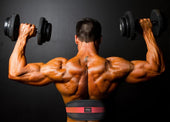
Do Weight Lifting Belts Help Lower Back Pain
-

Do I Need a Lifting Belt
-
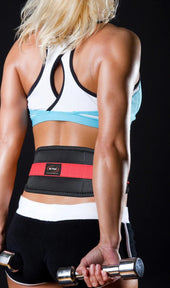
Purpose of Weight Lifting Belt
-

When to Use a Lifting Belt
-
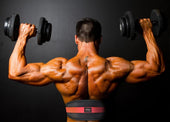
What Does A Lifting Belt Do
-

What Do Wrist Wraps Do For Lifting
-

How To Wrap A Wrist For Carpal Tunnel
-

How To Wrap Wrist For Pain
-

What Are Wrist Wraps For
-

How Do You Use Weightlifting Straps
-

Why Is Mental Focus Important in Powerlifting? The Key to Peak Performance
-

Can Bodybuilding Help with Fat Loss? Discover Proven Benefits
-

Mastering the Basics: How to Improve Your Powerlifting Technique
-

Why Is Proper Form Crucial in Powerlifting? Tips for Safe and Effective Lifting
-

Can Powerlifting Increase Athletic Performance? Exploring Strength Gains and Sport Benefits
-

Top Tips on How to Avoid Common Injuries in Bodybuilding
-

Why Is Recovery Essential in Bodybuilding: Key Strategies and Benefits
-

Can Powerlifting Improve Overall Fitness? Explained
-

How Many Deadlifts Should I Do?
-

How Much Can a 17 Year Old Deadlift? Average Weights and Tips
-

Why Aren’t My Arms Growing as Fast as My Chest? Top Reasons Explained
-

How to Do Back Compression Deadlift: Best Tips for Pain-Free Lifting
-

Why Is My Bench Press Not Increasing
-
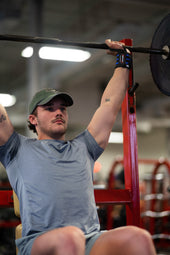
Unlock Your Potential: How to Get Stronger Gradually
-
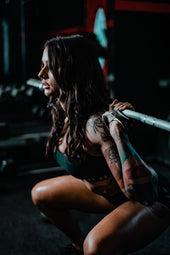
Unlock Muscle Growth: Understanding What Is the 6-12-25 Rule
-

5 Lbs of Muscle in a Month? Let's Get Real
-

Get that celebrity booty in 10 easy to do work out routines
-

A.M. vs P.M. Workouts
-

Fasting Do’s and Dont's
-
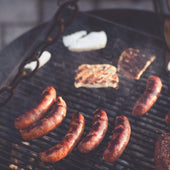
5 Surprising Sources of Protein
-

Home Workout Upgrade Must-haves
-

Top 5 Reasons You Aren’t Reaching Your Weightlifting Goals
-

Squats: A Must in Weightlifting and for Strength Training
-
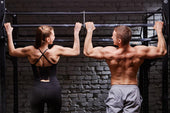
Weightlifting Routines for Men, Women and Beginners

